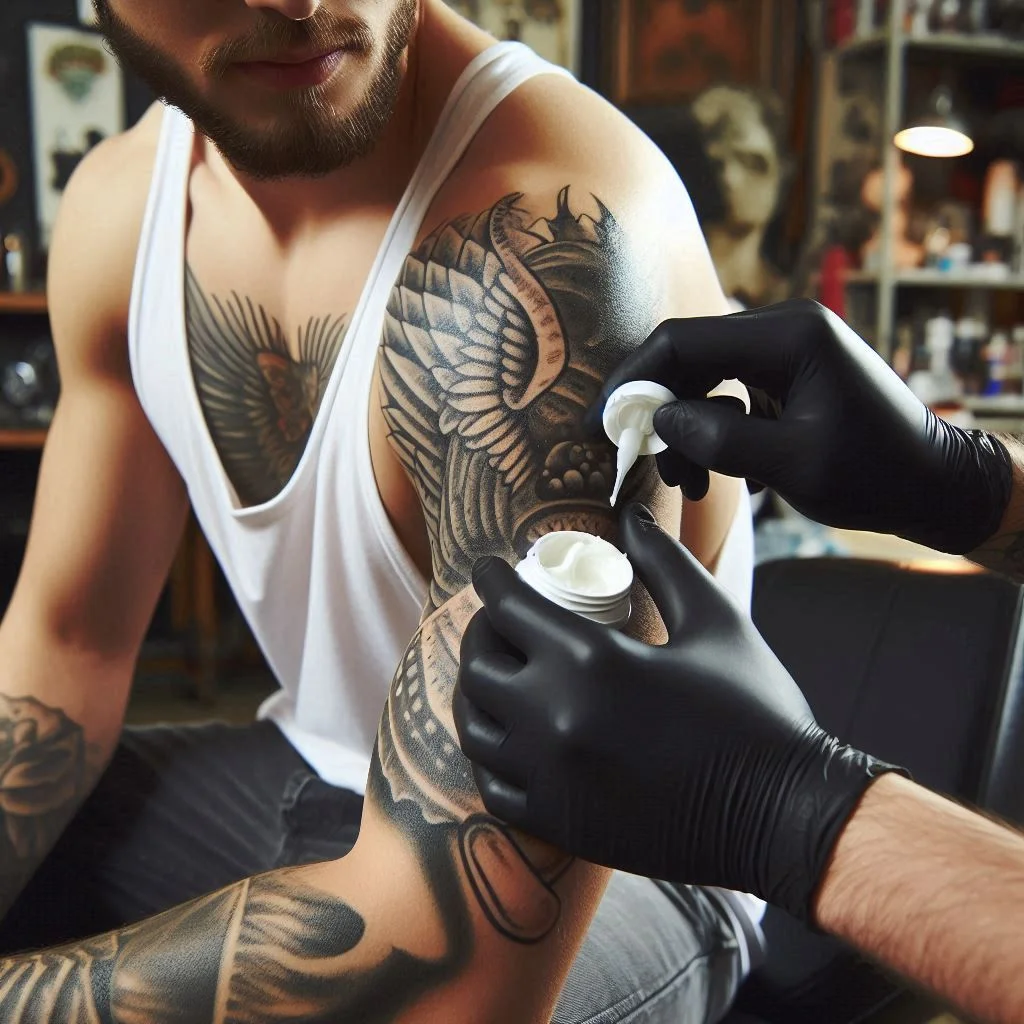Does Getting a Tattoo Hurt?
Come on—getting a tattoo isn’t the most pleasant experience. Although some individuals cope well with pain, others are concerned about the pain, particularly if it is an area that is sensitive.
That’s where numbing creams are useful! If you’ve been wondering if you should apply one prior to your tattoo session, this guide will assist you in knowing how they work, their advantages, possible risks, and the most effective way to use them for a painless tattoo experience.
1. What Is Numbing Cream and How Does It Work?
Numbing cream is a topical analgesic made to diminish discomfort by temporarily anesthetizing the skin. The creams consist of active compounds such as lidocaine, prilocaine, or benzocaine that act by stopping nerve impulses within the treated zone.

If used properly, numbing cream greatly diminishes pain from tattoos, making the procedure more tolerable—particularly for beginners or getting tattooed on sensitive areas of the body such as the ribs, elbows, or spine.
2. Is Numbing Cream Safe to Use Prior to a Tattoo?
Yes, numbing creams are safe but only if you apply a high-quality product correctly. But skin irritation, redness, and allergic reactions have been reported in some individuals.
To be on the safe side, follow the following steps:
Always patch test 24 hours prior to use.
Use FDA-approved or dermatologist-recommended creams.
Don’t overdo it—using too much can change the texture of skin.
Ask your tattoo artist in advance, as some prefer treating untreated skin.
3. What Are the Best Numbing Creams for Tattoos?
Not all of them are equally effective. Certain ones are effective for tattoos based on their deeper and longer impacts. Here are some of them:
Best Top Numbing Creams for Tattoos:
- Dr. Numb – Lidocaine-based top cream for swift relief.
- TKTX Numbing Cream – Deep-lasting formula with longer tattooing sessions.
- Zensa Numbing Cream – Free from chemicals, minimal irritation with natural ingredients.
- Ebanel Numb520 – FDA-approved best for all types of skin.
Always pick a good brand and check reviews before buying to achieve safe and effective outcomes.
4. How to Use Numbing Cream Before a Tattoo?
Applying numbing cream is crucial to making the most of its impact. Below is an easy step-by-step guide:
Step-by-Step Numbing Cream Application:
- Clean the skin – Wash with soap and water, then dry.
- Apply a thick layer – Use a generous amount, but don’t overdo it.
- Cover with plastic wrap – This helps the cream absorb better.
- Wait 30-60 minutes – Most creams take time to activate.
- Wipe off excess – Remove any remaining cream before tattooing.
By following these steps, you’ll ensure maximum numbness for a more comfortable tattoo session.
5. Does Numbing Cream Impact the Tattooing Process?
Numerous tattoo artists are divided in their opinions regarding numbing creams. Though they help alleviate pain, at times they can make the skin a bit harder or slippery, which may influence ink absorption. But most high-quality numbing creams are actually tattoo-specific, so if you pick a reputable brand and use it as instructed, it shouldn’t be a problem. Just always consult with your tattoo artist in advance so they can be okay with working on numbed skin.6. How Long Does Numbing Cream Last?
The majority of numbing creams have a duration of 1 to 3 hours, depending on the product and skin type. For a larger tattoo, you might need to apply a second layer halfway through (if your artist permits).- Variables That Influence Numbing Cream Life:
- Skin type – Oily skin could possibly absorb numbing agents differently.
- Tattoo location – Areas with greater blood flow might break down faster.
- Tattoo session length – Longer sessions can necessitate reapplication.
7. Are There Any Side Effects of Using Numbing Cream?
Although numbing creams are relatively safe, certain users might notice some side effects. Common Side Effects:- Skin irritation (itching or redness)
- Transitory numbness outside the area of the tattoo
- Allergic reactions (not common, but possible)
8. Can You Use Numbing Cream for All Tattoo Areas?
Yes, but some areas are more suited to numbing cream than others.- Best Tattoo Locations for Numbing Cream:
- Spine and ribs – Very sensitive, numbing cream makes a big difference.
- Feet and hands – Very painful with lots of nerve endings.
- Elbows and knees – Bony, little fat.
9. Where Can You Purchase the Best Numbing Cream for Tattoos?
Numbing creams are available at tattoo parlors, pharmacies, or online. Always buy from reputable dealers to get a genuine, working product.- Places to Buy Numbing Cream:
- Local tattoo studios – Some artists offer approved creams.
- Pharmacies – Check for over-the-counter anesthetic creams.
- Online stores – Purchase from reputable websites such as Amazon or specialty tattoo stores.